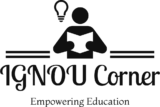Introduction
Language development is a vital aspect of a child’s cognitive and social growth. It enables children to communicate, express emotions, interact with others, and learn effectively. Language development begins early in life and involves acquiring both the ability to understand (receptive language) and produce (expressive language) spoken or written words.
Stages of Language Development
Language development occurs in progressive stages:
1. Pre-linguistic Stage (0–12 months)
- Birth to 6 months: Cooing and babbling begin; infants respond to sounds and voices.
- 6 to 12 months: Infants imitate sounds and recognize commonly used words like their name.
2. Single Word or Holophrastic Stage (12–18 months)
- Children begin to use single words (e.g., “mama,” “ball”) to express complete thoughts.
3. Two-Word Stage (18–24 months)
- Children combine two words to form simple sentences, such as “want juice” or “go park.”
4. Multi-word Stage (2–3 years and beyond)
- Vocabulary expands rapidly.
- Children start forming more complex sentences and begin to use grammar rules.
Key Components of Language Development
Language development involves several core components:
1. Phonology
This refers to the sound system of a language. It includes phonemes, which are the smallest units of sound. Children must learn to recognize and produce sounds correctly.
2. Morphology
Morphology deals with the structure of words. It involves understanding morphemes, the smallest units of meaning, such as “un-” or “-ing.”
3. Syntax
Syntax refers to the rules that govern sentence structure. It involves learning how words are arranged to form meaningful sentences.
4. Semantics
Semantics is about the meaning of words and sentences. As children grow, they expand their vocabulary and grasp subtle differences in meaning.
5. Pragmatics
Pragmatics involves the social use of language. Children learn how to use language in different contexts, such as asking questions, making requests, and understanding conversational rules.
Factors Influencing Language Development
- Biological: Brain development and genetic factors
- Social: Interaction with caregivers, family, and peers
- Cognitive: Memory, attention, and problem-solving skills
- Environmental: Exposure to rich language and educational resources
Conclusion
Language development in children is a complex and dynamic process influenced by both biological and environmental factors. It progresses through predictable stages and includes core components like phonology, syntax, and pragmatics. Supporting children with a language-rich environment and responsive communication can greatly enhance their development and future academic success.
